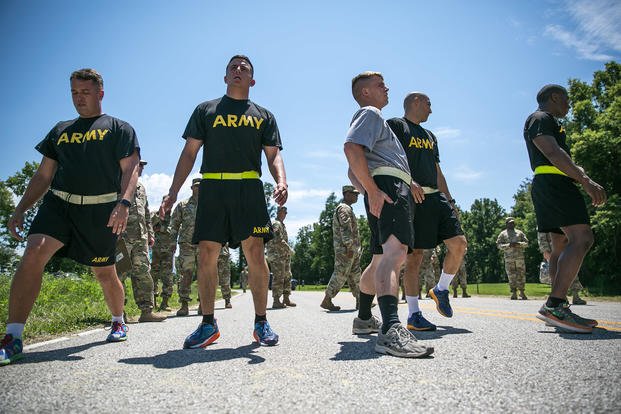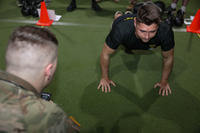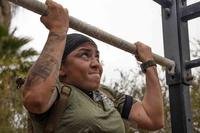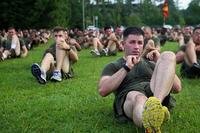After an injury, starting to train again can be difficult, depending on the type of injury, surgery needed, physical therapy appointments and progression with recovery.
All of these need to be considered when starting to train, but most of us also have a life that can compete with the time per day, days per week and equipment available in which to train.
Here is an email from an Army Reserve soldier who is recovering from injury, surgery and needs to get back in shape again to do his job:
Stew, I am pretty banged up from a previous injury/surgery but recovering and about to complete physical therapy. By next week, I should be good to go for training again. What do you recommend? I have some issues: time constraints (20-30 minutes), lack of flexibility/mobility and very little equipment for the next three months. Now, what do you recommend? Sgt. John
John,
I understand your situation. It is actually a good thing that your time is limited so you will not start off doing too much, too soon and too often. I would treat yourself like a beginner for at least a month and do the workouts in the 45-day beginner plan, a stretching plan, and a food plan. You do not need any equipment with the 45-day plan, except for a place to do calisthenics and some dumbbells. Most of these workouts are 20-30 minutes each day.
This routine will not stress your body out by overexertion, but this plan can be effective enough to get stronger, lose weight and continue to progress with your recovery. Because you are still recovering.
Mobility and foam roller: You may want to add in a Mobility Day as well, along with daily stretching -- even if that stretching is 10 minutes before bedtime.
After about 4-5 weeks, start putting in more intense workouts if you feel the need to progress with heavier dumbbells, harder calisthenics (pullups/dips) and start running if you are ready. Here are some guidelines and rules for starting a running program again so you can decrease your chances of injury:
- If you walk already, try running (mixed with walking).
- If you don't walk much, do not start running. Start walking.
- Increase your time and run or walk distance by 10%-15% each week.
- If you are very overweight (40-plus pounds), running or walking may be painful. Walk if you don't feel pain, but you also should consider non-impact cardio options like bike, elliptical, rowing and swimming to help you lose weight and start the fitness process.
- If it hurts to run, stop running. If it hurts to walk, stop.
I hope this helps you get ready to take your recovery from injury and surgery to the next level. Just be smart about your program and honestly "treat yourself like a beginner" for a few weeks.
And stretch daily.
Stew Smith is a former Navy SEAL and fitness author certified as a Strength and Conditioning Specialist (CSCS) with the National Strength and Conditioning Association. Visit his Fitness eBook store if you're looking to start a workout program to create a healthy lifestyle. Send your fitness questions to stew@stewsmith.com.
Want to Learn More About Military Life?
Whether you're thinking of joining the military, looking for fitness and basic training tips, or keeping up with military life and benefits, Military.com has you covered. Subscribe to Military.com to have military news, updates and resources delivered directly to your inbox.




















